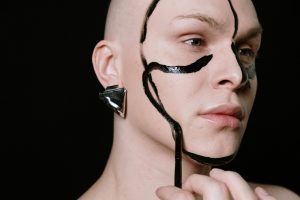Neurodiverse Design: Clothing Tags with QR-Triggered Sensory Previews
When it comes to fashion, there is much more to consider beyond just style and trend. For individuals with neurodivergent conditions, such as autism or sensory processing disorders, clothing can often be uncomfortable and overwhelming. However, a new development in clothing tags is providing a solution to this issue – QR-triggered sensory previews. In this article, we will explore the concept of neurodiverse design and how QR-triggered sensory previews are revolutionizing the fashion industry for individuals with sensory sensitivities.
The Need for Neurodiverse Design
Neurodiversity is a term that was coined in the late 1990s to promote the idea that neurological differences, such as autism, ADHD, dyslexia, and others, are natural and should be recognized and respected in society. According to the Centers for Disease Control and Prevention, approximately 1 in 59 children in the United States has been diagnosed with autism, making it one of the most prevalent neurodivergent conditions.
Many individuals with neurodivergent conditions have sensory sensitivities that can make everyday activities, such as getting dressed, a challenge. Traditional clothing tags, with their rough texture and small print, can be irritating and overwhelming for these individuals. This is where neurodiverse design comes in, providing solutions that accommodate a wider range of sensory needs.
What are QR-Triggered Sensory Previews?
QR stands for Quick Response, and QR codes are those square, black and white pixelated squares that are quickly becoming a common feature on product packaging, advertisements, and even clothing tags. These codes can be scanned by a smartphone or other device to direct the user to a specific webpage or content.
With the use of QR codes, clothing companies are now able to provide sensory previews of their products. This means that individuals with sensory sensitivities can scan the code on the clothing tag and be directed to a webpage or video that offers a sensory preview of the garment. This can include information about the fabric type, weight, texture, and any other relevant details that may affect the sensory experience of wearing the garment.
The Benefits of QR-Triggered Sensory Previews
Increased Comfort and Confidence
For individuals with sensory sensitivities, comfort is key when it comes to clothing. QR-triggered sensory previews allow them to make more informed decisions about their clothing purchases, knowing that the item will be comfortable and not cause sensory overload. This can lead to increased confidence and self-esteem, as individuals feel more comfortable and at ease in their clothing.
Improved User Experience
QR codes also offer a more seamless shopping experience for individuals with sensory sensitivities. Instead of having to physically touch and feel each item of clothing to determine if it will be comfortable, they can simply scan the code and access all the information they need. This saves time, energy, and reduces the sensory overload that can often accompany shopping.
Accessibility for Everyone
QR codes and sensory previews are not only beneficial for individuals with neurodivergent conditions but also for anyone who may have sensory sensitivities. This includes individuals with skin sensitivities, chronic pain, or anyone who simply prefers to have more information about a product before making a purchase.
Challenges and Potential Solutions
QR Code Scanning Technology
One of the challenges of implementing QR-triggered sensory previews into clothing tags is the technology itself. While most smartphones are equipped with QR code scanning capabilities, not everyone has access to a smartphone or may not feel comfortable using one. Clothing companies may need to consider alternative options for individuals who are unable to scan QR codes, such as providing a phone number or email address for individuals to request sensory preview information.
Customer Education and Awareness
Another potential challenge for implementing QR codes and sensory previews is customer education and awareness. Many individuals may not be familiar with QR codes or may not understand how to use them. Clothing companies may need to provide instructions on how to scan the codes, or include a quick video tutorial for customers.
In Conclusion
Neurodiverse design is a crucial aspect of creating a more inclusive and accessible world for individuals with neurodivergent conditions. QR-triggered sensory previews are just one example of how innovative solutions can make a significant impact, not only in the fashion industry but in society as a whole. By providing more information and options for individuals with sensory sensitivities, we can create a more comfortable and empowering experience for all.










